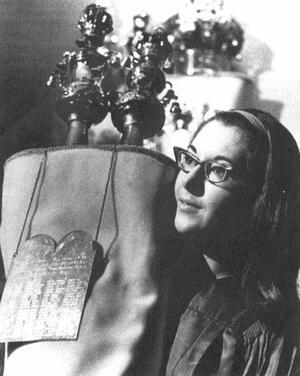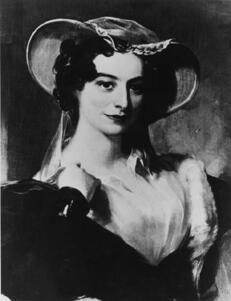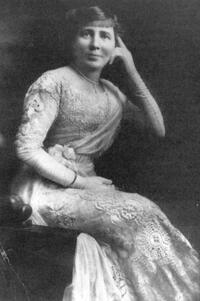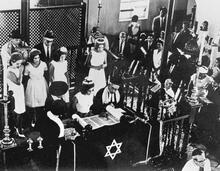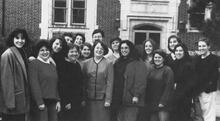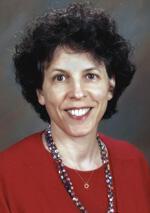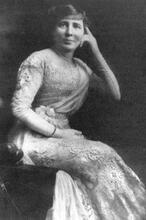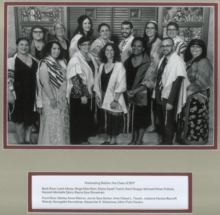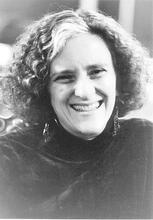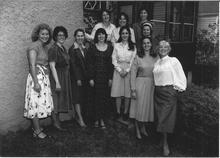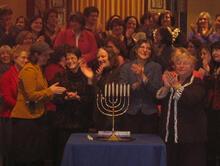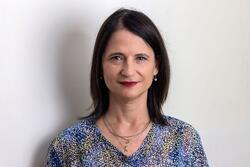Reform Judaism in the United States
This photograph was taken in 1972, when Sally Jane Priesand became the first woman in the United States to be ordained as a rabbi. She faced many challenges on the road to acceptance. But she continued to struggle to carve a place for herself—and for all women—within the panoramic diversity of Judaism.
Institution: The Jacob Rader Marcus Center of the American Jewish Archives, Cincinnati, OH, www.americanjewisharchives.org and Garrett Cope, Citizen Patriot, Jackson, MI
The 150-year history of organized Reform Judaism in the United States has been marked by continuous adjustment to roles and expectations for women that, in many ways, has been the movement’s signature defining feature. Chief among Reform Judaism’s liberating innovations have been the abolition of a separate women’s gallery within the synagogue starting in the 1850s and the ordination of the first American female rabbi in 1972. While the Reform movement has long celebrated its pioneering role in forwarding women’s public engagement and leadership, whether as congregants or as rabbis, those advances have also been accompanied by experiences of exclusion and discrimination that have, at times, belied the movement’s rhetorical embrace of equality.
Introduction
Leaders of Reform Judaism in the United States have often celebrated their movement’s role in emancipating women from the many restrictions that Judaism had traditionally imposed upon their ability to participate in and lead public worship. Reform thinkers in Germany made the case for women’s equality in Judaism and the abolition of anachronistic laws and customs that stifled the public expression of women’s religiosity. It was only in the United States, however, that practical innovations adopted by the Reform Movement actively redefined the nature of women’s participation in public worship. Chief among Reform Judaism’s liberating innovations have been the abolition of a separate women’s gallery within the synagogue in the 1850s and the ordination of the first American female rabbi in 1972. Reform congregations have also served as important sites for American Jews to work out the tensions between changing societal expectations for American women and the gender-differentiated roles prescribed by traditional Jewish practice.
In many ways, continuous evolving change to roles and expectations for women has been the signature defining feature of American Reform Judaism. At the same time, the Reform Movement’s public claims about its commitment to women’s equality have not always been matched by the realities of women’s experience within the movement. There is no debate that the American Reform Movement has been a pioneer in forwarding women’s public engagement and leadership as Jews. Yet, those advances have often been accompanied by discordant notes that have belied a rhetoric of equality and often silenced those whose experience did not live up to the movement’s inclusive claims. In fact, as the movement approached the fiftieth anniversary of the ordination of the first American woman rabbi in 2022, the tension between this rhetoric and the contrasting reality experienced by many was as intense and public as it had ever been.
Family Pews
Many innovations in early American synagogues had begun to redefine women’s place in Jewish worship even before the emergence of a formal Reform Movement. American synagogue builders had, for the most part, done away with the partition barriers that kept women out of sight in traditional women’s galleries. Many congregations employed choirs of mixed male and female voices that challenged Orthodox prohibitions against allowing women’s voices to be heard within worship services. And the introduction in many synagogues of confirmation services for both boys and girls signified, in part, an effort to solemnize and recognize the Jewish education and identity of girls along with their male counterparts.
Family pews, the innovation connected with women’s status most explicitly identified with the nineteenth-century American Reform Movement, may have arisen as a matter of convenience. When Rabbi Isaac Mayer Wise’s Anshe Emeth Congregation in Albany occupied a church building in 1851 and when New York’s Temple Emanu-El bought a former church in 1854, both congregations determined that, rather than build new galleries, they would seat men and women together in the pews formerly used by the churches. This move helped both American Jews and non-Jews understand the religious identity of Jewish women as more akin to that of their Christian neighbors—enabling them to be seen as the moral guardians and exemplars of their families, rather than as exotic Jewesses sequestered in separate galleries.
The prominence of Temple Emanu-El and its elite congregants helped place family pews on the national Reform agenda. With Reform’s emergence as the dominant tendency among America’s acculturating Jews in the 1860s and 1870s, the family pew became a requisite feature of the imposing temples and synagogues added to the post–Civil War urban landscape. Offered a place in the sanctuary, Jewish women continued a trend that had marked early nineteenth-century American synagogues. In a departure from the traditional pattern of synagogue worship, women quickly came to dominate attendance at weekly Sabbath services.
Women’s access to the sanctuary floor came as the content of congregational participation was being radically redefined. The Judaism championed by American Reformers placed the rabbi or service reader in a prominent elevated location at the front of the congregation, with services now focused on often lengthy sermons and elaborate choral orchestrations of traditional prayers. Consequently, the role of congregants, whether women or men, was subordinated to that of those leading the worship; they were relegated to a more passive prayer experience that required less—not more—liturgical or ritual literacy.
Although Reform leaders often celebrated their introduction of the family pew in bringing gender equality to Jewish religious life, the second half of the nineteenth century brought mixed results in forwarding the public position of women in America’s Reform congregations. Jewish women’s attendance patterns may have emulated the pew dominance of American Christian women, but mid-nineteenth-century Jewish women did not participate in the explosion of voluntary and organizational activity identified with women in Protestant churches of the same era.
The Reform synagogue’s emphasis upon worship diminished the influence and even existence of many synagogue-affiliated groups, like female benevolent societies, that had earlier been part of broadly defined synagogue communities. Those active synagogue affiliations that remained—spiritual leadership and lay governance—remained in exclusively male hands until the beginning of the next century, when new developments would begin to chip away at the patriarchal status quo.
Growing Roles in Congregational Life
Formal organization of the Reform Movement grew from the founding of the Union of American Hebrew Congregations (UAHC) in 1872 (renamed as the Union for Reform Judaism, or URJ, in 2003) and Hebrew Union College (HUC, later HUC-JIR after a 1950 merger with the Jewish Institute of Religion) in 1875. Reform leaders encouraged the creation of women’s groups that would contribute money to these efforts, but otherwise women had little involvement in these institutional developments. Although HUC president Isaac Mayer Wise had often called for the creation of a “female theological seminary,” nothing along these lines ever emerged. A few female students did enroll at the early Hebrew Union College, but none advanced very far in their studies.
One arena in which women continued to expand their involvement in synagogue life was in congregational religious schools. Women had played primary roles in the creation of supplementary Jewish religious schools, going back to the creation of the Jewish Sunday School Society by Rebecca Gratz and her women colleagues in 1838. Such supplementary schools became important elements of Reform congregations as they arose, featuring women as both teachers and supporters. But even in these settings, women were often explicitly excluded from leadership roles. Indeed, congregational leaders largely rejected calls in the 1890s to add women to their religious school boards.
Yet, during this same period, Reform congregations introduced more equality in the religious education of boys and girls through the emphasis in post-Civil War Reform congregations on the group confirmation ritual, observed usually on Lit. "weeks." A one-day festival (two days outside Israel) held on the 6th day of the Hebrew month of Sivan (50 days, or 7 complete weeks, from the first day of Passover) to commemorate the Giving of the Torah on Mount Sinai; Pentecost; "Festival of the First Fruits"; "Festival of the Giving of the Torah"; Azeret (solemn assembly).Shavuot in May or June. In part, confirmation represented a rejection by Reform leaders of the traditional Lit. "son of the commandment." A boy who has reached legal-religious maturity and is now obligated to fulfill the commandmentsbar mitzvah for boys that they saw as a rote and primitive coming-of-age ritual. For them, confirmation services represented a more elevated rite of passage, with girls and boys together offering prayers and speeches as testimony to their learning and commitment.
Not until the late 1880s did new structures emerge to absorb the latent energies of adult women within Reform congregations. The first Jewish Sisterhood of Personal Service, organized by Rabbi Gustav Gottheil of New York’s Temple Emanu-El, provided the prototype for a women’s organization that was emulated in Jewish congregations throughout the country. At first, these groups of Americanized Jewish women focused their energies on the impoverished Eastern European Jewish multitudes arriving in the United States. Yet, as Jewish communities and professionalized social workers endeavored to meet the needs of vulnerable immigrants in a more coordinated fashion, women volunteers found themselves often pushed out.
Instead of disappearing, however, women’s synagogue organizations began to turn their newly activated energies back to their own communities. They served in whatever ways congregations would allow them to participate and were often steered to arenas such as religious schools and temple decor. This redirection of women’s energies was also facilitated by attempts on the part of the first generation of American Reform rabbis to expand the ambit of their congregations beyond the worship-centered sanctuary. Massive temple edifices built in the early twentieth century hosted a broad range of community-oriented activities, often made possible by the community-building energy offered by women congregants.
Women affiliated with the Reform Movement were first organized into a national movement in 1913 when the National Federation of Temple Sisterhoods (NFTS) was formed at a special meeting attended by 156 women representatives from 52 congregations, held in conjunction with a meeting of men congregational leaders in Cincinnati. The moving forces behind creation of NFTS were Rabbi George Zepin of the UAHC and Carrie Simon, a civic leader who was the wife of a Washington, D.C., rabbi. Simon served as the organization’s founding president and Zepin as its executive secretary. Organization of the NFTS at a national level prompted many congregations that had not yet created women’s membership organizations to found local synagogue sisterhoods. Once founded, these groups provided avenues for thousands more women to focus their energies on congregational life.
Congregations and their governance structures were slow in welcoming women’s participation. While many Reform congregations offered membership to widows and single women, most married women could belong only by virtue of their husbands’ individual memberships. A few Reform congregations responded to calls from the National Council of Jewish Women in the 1890s to open synagogue membership to married women and to invite women onto congregational committees. Yet, for the most part, these requests met stony resistance. Some congregations added sisterhood presidents to their congregational boards after the founding of NFTS in 1913. But not until after 1920, and the passage of the Nineteenth Amendment to the Constitution recognizing female suffrage, did most congregations accede to sisterhood requests and offer formal membership to married women and invite sisterhood presidents to serve on congregational lay leadership boards.
Between the two World Wars, sisterhood members elaborated their congregational roles and assumed responsibility for a wide range of temple, school, and communal activities, as well as for certain liturgical events. Sisterhoods organized community Lit. "order." The regimen of rituals, songs and textual readings performed in a specific order on the first two nights (in Israel, on the first night) of Passover.seders and summer services. At annual sisterhood Sabbaths, women took public pulpit roles, delivering sermons and often conducting the worship services. On a national level, NFTS took a leading role in supporting the movement’s rabbinical school, providing student scholarships and funds to build the Sisterhood Dormitory on the Hebrew Union College campus in Cincinnati. NFTS was also instrumental in founding the National Braille Institute and the National Federation of Temple Youth.
Paths Toward Religious Leadership
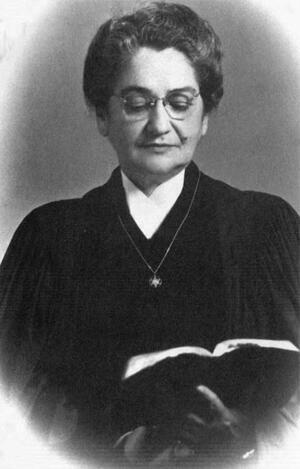
Paula Ackerman, reading from a religious text.
When Paula Ackerman's husband, William Ackerman, died in 1950, his congregation, the Reform Temple Beth Israel of Meridian, Mississippi, requested that she succeed him. Thus, Paula Ackerman became the first female spiritual leader of a mainstream Jewish congregation in the United States.
Institution:The Jacob Rader Marcus Center of the American Jewish Archives, Cincinnati, OH.
The presence, contributions, energy, and activities that women brought to the Reform Movement, nationally and locally, contributed to growing expectations that women should be recognized as full participants in the work of Reform Judaism. Through the sisterhood, women were beginning to have a say in both local synagogue governance and the national movement. It was not long before the growing cadre of local and national sisterhood leaders, together with the logic implicit in the woman suffrage amendment, confronted Reform leaders with the question of female religious leadership.
In 1922, facing the possibility that Martha Neumark, a female student at Hebrew Union College and daughter of a faculty member, might continue her studies and become a candidate for ordination, HUC’s Board of Governors and faculty and the Central Conference of American Rabbis (CCAR), the Reform Movement’s federation of rabbis, took up the question of whether to approve, in principle, the ordination of female rabbis. Some traditionalist-leaning members of the HUC faculty expressed misgivings as to whether the Reform Movement, in ordaining women, would irreparably sunder itself from the other movements in Judaism. Nonetheless, the faculty unanimously agreed that this innovation was consistent with the inclusive and progressive tenets of the Reform Movement and was equivalent to other major breaks with tradition accepted by the movement. Consideration of the issue at the 1922 CCAR convention was especially noteworthy for the decision of the delegates to include female members of the audience, mainly wives of the rabbis in attendance, in the discussion. Despite votes by both the HUC faculty and the CCAR to support the proposed change, HUC’s Board of Governors, which had to make the final decision, rejected the proposal.
The question of whether women should serve as rabbis lay dormant over the next few decades as the energy and creativity of women within the movement provided their communities with a rich congregational life. During World War II, as had been the case during World War I, many women looked to the sisterhood to formalize their contributions to the war effort. They knitted, crocheted, baked cookies, organized blood banks, sold bonds, conducted first-aid classes, and resettled Jewish refugees, all under the auspices of their congregational sisterhoods. Continued postwar growth in synagogue activity reflected a nationwide return to religion that enlivened both churches and synagogues through the 1950s. As synagogue organizational life flourished, sisterhoods were critical in sustaining synagogue life in older congregations and in creating new frameworks for community as old and new congregations found their way to the suburbs.
As the bar mitzvah ceremony regained popularity in some Reform congregations after World War II, confirmation ceremonies became increasingly a province for girls alone. The feminization of the group confirmation service, together with the bar mitzvah ceremony’s emphasis on individual Jewish ritual skills and obligations, increasingly highlighted the gender inequity within Jewish worship that confirmation was meant to neutralize.
The first bat mitzvah ceremony, as a female counterpart to the bar mitzvah, was introduced by Mordecai Kaplan, founder of the Reconstructionist Movement, for his daughter Judith Kaplan (Eisenstein) in 1922. (She read a text from the Torah she-bi-khetav: Lit. "the written Torah." The Bible; the Pentateuch; Tanakh (the Pentateuch, Prophets and Hagiographia)Torah, but from a printed version, rather than from the scroll itself.) The bat mitzvah ceremony, offering girls a chance to lead some of the service, often on Friday evening, slowly took root within the Conservative Movement in the 1930s and 1940s. The Reform Movement’s commitment to the confirmation rite, however, slowed acceptance of the bat mitzvah in Reform temples. Bat mitzvah ceremonies began to appear in Reform congregations in the 1950s and made more general progress in the 1960s. Building on the Conservative example, a Reform bat mitzvah during this time was often celebrated with a reading of the haftarah on Friday night, rather than with the Saturday morning Torah service that was standard for boys. By the early 1970s, a Saturday morning bat mitzvah service, identical in its requirements with the ceremony held for boys, was in place in some Reform congregations, becoming ubiquitous by the 1990s.
In the years surrounding the publication of Betty Friedan’s The Feminine Mystique (1963), the rhetoric of gender egalitarianism and equality of opportunity became more familiar in the broader culture. The idea of distinctive religious obligations and duties for boys and girls, or for men and women, within Judaism became increasingly hard to defend. No one within the Reform Movement publicly questioned the decision of the Reform congregation of Meridian, Mississippi, to appoint Paula Ackerman, the widow of their deceased rabbi, to serve as the community’s spiritual leader from 1951 to 1953. In 1956, the CCAR’s Barnett Brickner asked his colleagues to declare a commitment to the principle of female ordination. Although his proposal received general approval, the question was “laid on the table” until those with opposing views could present their case—or, as it turned out, indefinitely. In 1963, the women of the NFTS highlighted shifting cultural currents and renewed attention to questions of women’s equality with a resolution requesting the governing (male) bodies of Reform Judaism to again take up the question of women’s ordination.
Achieving Religious Leadership
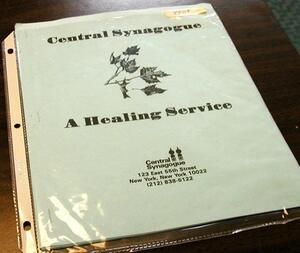
Institution: Eleanor Leff Jewish Women’s Resource Center (JWRC) of the National Council of Jewish Women, New York Section
In 1972, the issue of women’s ordination was resolved without official statements or resolutions from the movement’s organizing bodies. In 1964, Sally Priesand began her studies as an undergraduate at the University of Cincinnati and Hebrew Union College–Jewish Institute of Religion. Rather than formally apply to the rabbinical school, she simply continued in her studies after her college graduation. As such, the question of her ordination turned from one of abstract commitments into one of practical realities. HUC–JIR president Nelson Glueck made clear that he would ordain Priesand when the time came. Glueck, however, did not live to do so. After his death in 1971, the honor of ordaining America’s first female rabbi fell to Alfred Gottschalk, Glueck’s successor as president of HUC–JIR. Barbara Ostfeld became the movement’s first invested cantor in 1975. The Reform Movement’s advance was soon followed by the Reconstructionist Rabbinical College, which ordained Sandy Eisenberg Sasso as its first female rabbi in 1974. The Conservative Movement’s Jewish Theological Seminary ordained that movement’s first woman rabbi, Amy Eilberg, in 1985. In 2009, Sara Hurwitz was one of the first Orthodox women to receive private ordination as a religious leader. That same year, she co-founded Yeshivat Maharat, which ordains Orthodox women clergy; its graduates have adopted various titles, including rabba, maharat, rabbanit, and rabbi.
The ordination of Sally Priesand was seen by some as the ultimate realization of women’s religious equality within the Reform Movement. By the early 1990s, the number of women ordained approached equity with that of their men colleagues. Given the large number of older male rabbis, however, women continued to make up a clear minority of the Reform rabbi ranks. In 2018, 735 living rabbis identified as female and 1421 as male. In 2021, there were 835 Reform women rabbis around the world.
In the early years after Priesand’s ordination, women rabbis faced much overt hostility and skepticism about their ability to do the job. A 1980 survey of Reform congregants and rabbis collected data pointing to concerns about women’s inability to lift the Torah, speak loudly enough, wield authority, navigate conflict, balance careers and family, and preach about anything besides feminism. Starting from this low point, the movement saw steady, if often slow and conflicted, progress in public acceptance and in the influence wielded by women rabbis.
While there were no women on the tenure-track faculty of HUC-JIR’s four campuses in 1982, by 1992, there were four (although two of these became the first faculty members in almost 40 years to be denied tenure or reappointment). By 2003, the school was able to boast of meaningful progress on this front, with twenty-four full-time women faculty members (in both tenure track and clinical positions). On the eve of fiftieth anniversary of Rabbi Priesand’s ordination, the school could point to thirteen women in tenured or tenure-track positions, 40% of its total faculty, a list that included Andrea Weiss, the school’s provost and ordaining rabbi.
On the congregational front, there was a fair amount of early resistance to women rabbis, particularly in senior positions in large congregations. A narrative began to emerge that one impact of women’s ordination would be to redefine success within the Reform Movement to include appreciation for the rabbinic experience within smaller congregations. In 1993, at a conference celebrating the twentieth anniversary of Priesand’s ordination, Laura Geller (ordained in 1976 as the movement’s third woman rabbi) affirmed this choice for those who sought it, but she also challenged the view that smaller congregations were right for all women; she underscored the striking absence of women in prominent rabbinical positions, as well as the institutional structures that perpetuated this reality. Soon thereafter, Geller became the first woman hired through a national search to lead a major metropolitan synagogue (Temple Emanuel of Beverly Hills).
By 2005 at least fifteen women had been appointed to senior rabbinic positions in Reform congregations with membership of five hundred or more households, including Rabbi Marcia Zimmerman, who in 2001 was chosen to lead the 1900 families of Temple Israel in Minneapolis, Minnesota. A 2016/17 CCAR study indicated that there were nine women (20% of the total number) in senior rabbi positions at congregations with more than 1000 families. For congregations with more than 600 families, women filled about 19%, or 24 of 125 total pulpits. The study also revealed significant gendered salary disparities for those holding similar positions and in the rabbinate overall.
As the salary study suggests, despite the apparent trajectory of their increasing influence, public affirmations of equality for women rabbis have not always translated into meaningful equity. Beyond salary issues, women have frequently found their placement or renewal as clergy complicated by concerns about marital status, childcare responsibilities, sexual orientation, wardrobe and personal appearance, and ability to get along with male supervisors. Meanwhile, for much of this period, it was almost impossible for victims of sexual harassment and coercive male gatekeeping to call attention to these experiences and barriers for fear of offending colleagues who controlled access to future professional roles.
The Women’s Rabbinic Network (WRN) has been the main institutional entity trying to document and call attention to this ongoing disparity between rhetorical equality and actual experience. The WRN emerged as an outgrowth of organizations created in the 1970s by female rabbinical students seeking both personal support and professional guidance at the New York and Cincinnati campuses of HUC-JIR. Over time, WRN functioned as a sort of watchguard and conscience for the movement, seeking to pressure Reform leaders to acknowledge and confront the ways in which matching traditional understandings of what constitutes a “rabbi” has not always been an easy path for many women. WRN created a groundbreaking policy for parental leave and continues to call out disparate outcomes and salary scales for women and men candidates for rabbinical posts. In addition, drawing upon women’s experience of marginalization, WRN has brought attention to similarly situated groups. This emerged, in particular, with its championing of the need for a CCAR resolution affirming rabbinic officiation of same-sex marriages in 2000.
The pace of women finding leadership roles in the Reform Movement beyond congregational pulpits was initially exceedingly slow, a situation that only began to change significantly some thirty years after Priesand’s ordination. In April 2003, Rabbi Janet Marder, who served the 1300-member Congregation Beth Am of Los Altos Hills, California, was elected the first woman president of the Central Conference of American Rabbis. Rabbi Ellen Weinberg Dreyfus was elected to that role in 2009. In 2015, Rabbi Denise L. Eger became the third woman president of the CCAR, and the first president of the organization to identity as LBGTQ. Women have yet to occupy the major roles of president of the Union of Reform Judaism and president of HUC-JIR, but, in 2019, Rabbi Hara Person became the first woman to serve as chief executive, the continuing professional leader, of the CCAR.
In the early twenty-first century, women rabbis also emerged as the preeminent liturgists of the movement. In 1975, the long-lasting Union Prayer Book had been replaced with Gates of Prayer, which removed references to “mankind” and “man” but continued to assign masculine pronouns to God. In 1993, the movement published a “gender-sensitive” Gates of Prayer that removed male pronouns for God, offered gender-neutral English prayers and translations, and introduced the matriarchs (Sarah, Rebecca, Leah, and Rachel) alongside the patriarchs (Abraham, Isaac, and Jacob). Otherwise, few changes appeared in the Hebrew text or translations of the refurbished Gates of Prayer.
In 2007, after an extensive period of market testing, the movement published Mishkan T’filah, edited by Rabbi Elyse Frischman, as a replacement for Gates of Prayer as the movement’s central liturgy. The CCAR had published The Open Door: A Passover Haggadah, edited by Rabbi Sue Levi Elwell, in 2002. These texts offered liturgies intended for all that reflected the impact of women rabbis and feminist ideas. The central idea of Mishkan T’filah—offering up multiple voices and interpretations along with accessible Hebrew transliterations—was sustained through a series of liturgical efforts on this model, the majority edited by women. In 2021, the movement published Mishkan HaSeder: A Passover Haggadah, edited by Rabbi Hara Person and poet Jessica Greenbaum.
Evolving Congregational Roles Since Feminism
Changing societal roles and expectations for women, as exemplified by the rise of women rabbis, have continued to reshape congregational life far beyond questions of spiritual leadership. For instance, congregational leaders can no longer take for granted the unlimited energy and time of a continuous core of talented female volunteers. As a result, much of the responsibility for sustaining an (albeit more limited) range of congregational activities falls increasingly upon paid staff members (of all genders). At the same time, the success of women rabbis and feminist-driven initiatives within congregational life raised questions about the continuing need for sisterhoods and the channel they had provided for full participation in congregational life. Many women were able to advance in synagogue governance without first rising through the sisterhood, as had previously been the model. Combined with condescending perceptions among younger generations of the traditional subordinate roles assigned to sisterhoods, as well as evolving understandings of gender, these changes led to declines in the number of Sisterhood chapters and in membership.
Such concerns were reflected in the National Federation of Temple Sisterhoods’ 1993 decision to change its name to Women of Reform Judaism (WRJ). The name change represented a desire to be seen not merely as an ancillary service group but as an organization that puts its members and their interests at the center of the Reform Movement.
Yet, even amidst many hurdles, Women of Reform Judaism continues to play a central role in challenging the movement to respond to women’s insights and needs. In 2021, WRJ had 350 local chapters and more than 40,000 members, and it continued to fulfill many of NFTS’s traditional roles, such as raising money to support rabbinical students (both women and men), Reform youth, and the publication of Reform liturgies. WRJ likewise continued to advocate for social progress, with a focus in recent years on reproductive choice, labor rights, and domestic violence prevention. Beyond these familiar roles, WRJ has also marshalled its influence and worked collaboratively, often in concert with the Women’s Rabbinic Network, to create new possibilities and expectations for women and for the Reform Movement.
One of WRJ’s most significant undertakings was the creation of The Torah: A Women’s Commentary, published in 2007. WRJ took up a suggestion, first made by Cantor Sarah Sager in 1993, and contributed extensive communal input, funding, and coordination to bring forth an ambitious Torah commentary, authored solely by women. The final product, edited by HUC faculty member, Tamara Cohn Eskenazi, offers the full Hebrew text with English translation, accompanied by running textual commentary and multiple interpretive voices. This empowered reading of Torah through a feminist lens could only have appeared when it did, requiring the organizational commitment of the Women of Reform Judaism along with the learning and insights of skilled women Bible scholars.
In 1979, WRJ called attention to the compensation gap between men and women professionals throughout the movement. WRN also took up this cause, eventually pressing the movement to conduct comparative studies of compensation by gender for multiple professional roles within the movement in 2012 and 2017. Armed with the hard data on wage disparities that these studies provided, WRJ and WRN combined their efforts and created the Reform Pay Equity Initiative, to which they invited all organizations affiliated with the movement. WRJ continued to work with WRN in providing tools, trainings, and templates to disrupt disparate compensation and hiring practices.
#MeToo Challenges
For all the clear progress in women’s influence and leadership over the 150-year history of the organized North American Reform Movement, an accompanying narrative was gradually coming into view as the fiftieth anniversary of Sally Priesand’s 1972 ordination approached.
In the wake of the broader #MeToo movement, highlighting the many arenas in which women have faced discrimination and/or predatory sexual behavior at the hands of male superiors or gatekeepers, women within the Reform movement began to share their own negative experiences in greater numbers. For the most part, movement leaders attempted to address growing concerns about sexual harassment and discrimination through internal mechanisms. In 2018 the CCAR revived its Task Force on the Experience of Women in the Rabbinate (the first such task force was convened in 1977), with a pledge that it would take on issues of “gender-based bias, inappropriate comments, sexual harassment, sexual assault, lack of proper institutional support, undermining behavior, and issues related to contracts, pay equity, and parental leave.”
One important result of the Task Force’s work was to make policy changes in connection with issues that had been long championed by WRN and WRJ. Thus, for instance, in addition to the CCAR’s continued salary surveys, the CCAR rabbinic placement process was revised to require salary ranges be included in all job postings and to provide resources on and encourage the use of implicit bias training by all hiring committees.
Two incidents, however, pushed the movement to recognize that continued pledges to do better were inadequate. In March 2021, an explosion of posts appeared on the CCAR’s closed Facebook page, detailing abusive behavior by professors and prominent individuals employed by HUC-JIR. In response to the growing outcry, and prodded by the WRN, the school committed to engaging outside investigators to undertake a “thorough review” of past objectionable behavior and made promises of accountability for the future.
Hard on the heels of this mostly internal reckoning, a different scandal came into public view. On April 27, 2021, Central Synagogue in New York City released a statement publicizing the troubling details of its investigation into the behavior of a former senior rabbi, Sheldon Zimmerman. A 2000 CCAR ethical investigation, conducted while Zimmerman was president of HUC-JIR, had pointed to past “inappropriate relationships” while he was at Central Synagogue between 1970 and 1985. The 2000 investigation led to his temporary suspension from the CCAR and resignation from HUC. Within months of his December 2000 resignation, however, he began a series of prominent jobs in high-profile Jewish communal organizations, including as executive vice president of Birthright Israel and vice president of United Jewish Communities, the precursor to the Jewish Federations of North America. He went on to serve for ten years as rabbi of the Jewish Center of the Hamptons before retiring in 2017, after which he moved back to the Dallas area and did some teaching at Temple Emanuel, where he had previously served as senior rabbi.
Central Synagogue’s description of credible allegations of Zimmerman’s “sexually predatory behavior,” including the targeting of a teenager, raised questions about the original CCAR investigation and Zimmerman’s eventual reinstatement. Whereas earlier investigations conducted within the Reform Movement were characterized by opacity and a reliance on confidentiality, Central Synagogue’s was unprecedented in its forthright commitment to transparency, continued inquiry, and public accountability. It does not seem like a coincidence that Central’s senior rabbi at the time of the investigation was notable for her pioneering profile. It was not just that Angela Buchdahl became the first woman to lead this historic congregation when she was appointed in 2014. She had already become the first Asian American to be ordained as a cantor and the first Asian American to be ordained as a rabbi.
The news about Zimmerman brought the entire movement under scrutiny. As of this writing in 2021, the three main branches of the Reform Movement (HUC, URJ, CCAR) and three major synagogues (including two where Zimmerman had served as senior rabbi) had all launched investigations, headed by external law firms, to look into historic and more recent instances of gender-based harassment, discrimination, and abuse, as well as the integrity of past investigations.
The WRN noted pointedly that the emerging allegations against Zimmerman and others represented not just “isolated incidents, but rather a pattern throughout our … institutions for which those institutions must be held to account.” Hara Person of the CCAR appeared to confirm this analysis by suggesting that her organization stood at a major “inflection point” that would, presumably, result in the ability of Reform institutions to live up to their long-embraced rhetoric of equality and inclusion. As the WRN put it: “Now is the moment to prove that our future will be different than our past … Now is the moment … to ensure that people of all genders, sexual orientations, races, and abilities will be safe and respected within Reform Jewish spaces.”
The public nature of these reckonings also proffers the hope that future histories of the Reform Movement in the United States might be able to recount more fully not just progress toward gender equity, but also the struggles to achieve that progress. As all North American Jewish denominations face falling rates of affiliation, Reform Judaism remains the largest American denomination (37% of American Jews identify as Reform, according to a 2021 Pew study). Many see the movement’s legitimacy at stake in its ability to live up to what the WRN identified as its “stated values” of honoring women’s agency and leadership. This should not be surprising. In fact, the current recognition that a vibrant and relevant Judaism must respond to the challenges raised by the evolving position of women continues a dynamic derived from the earliest days and concerns of the Reform Movement in the United States.
Balin, Carole B. “From Periphery to Center: A History of the Women’s Rabbinic Network.” CCAR Journal (Summer 1997).
Balin, Carole B., Herman, Dana, Sarna, Jonathan D., Zola, Gary P., eds. Sisterhood: A Centennial History of Women of Reform Judaism. Cincinnati: Hebrew Union College Press, 2013.
CCAR Journal - Pay Equity within the Reform Movement (Fall 2018).
CCAR Journal-Gendered Judaism- Gender-Based Programs in Jewish Life (Spring/Summer 2021).
Central Conference of American Rabbis website (ccarnet.org, accessed June 1, 2021).
Central Conference of American Rabbis and Union for Reform Judaism. “2016-2017 Study of Rabbinic Compensation” (https://www.ccarnet.org/wp-content/uploads/2018/01/2016-2017_salary_study_.pdf).
Dreyfus, Hannah. “Reform rabbinic giant disciplined for inappropriate relationships now accused of ‘sexually predatory behavior.” The Forward, April 27, 2021; https://forward.com/news/468535/reform-cover-up-rabbi-sheldon-zimmerman-sexually-predatory-behavior/
Evans, Jane. “Intertwining Yesterday, Today, and Tomorrow: The Union of American Hebrew Congregations.” In The Jewish Condition: Essays on Contemporary Judaism Honoring Rabbi Alexander M. Schindler, edited by Aron Hirt-Manheimer. New York: UAHC Press, 1995.
Goldman, Karla. Beyond the Synagogue Gallery: Finding a Place for Women in American Judaism. Cambridge: Harvard University Press, 2000.
Goldman, Karla. “Women in Reform Judaism: Between Rhetoric and Reality.” In Women Remaking American Judaism, edited by Riv-Ellen Prell. Detroit: Wayne State University Press, 2007.
Hebrew Union College – Jewish Institute of Religion website. (http://huc.edu/directory, accessed June 1, 2021).
“An Important Message from Central Synagogue,” April 27, 2021: https://www.centralsynagogue.org/news/detail/an-important-message-from-central-synagogue
Joselit, Jenna Weissman. The Wonders of America: Reinventing Jewish Culture, 1880–1950. New York: Farrar Straus & Giroux, 1994.
Lefton, Deborah Levine, “Women’s Equality in the Synagogue: The National Federation of Temple Sisterhood’s Search for Autonomy, 1913-1930.” Rabbinical Thesis, Hebrew Union College-Jewish Institute of Religion (2001).
Nadell, Pamela S., and Rita J. Simon. “Ladies of the Sisterhood: Women in the American Reform Synagogue, 1900–1930.” In Active Voices: Women in Jewish Culture, edited by Maurie Sacks. Urbana, IL: University of Illinois Press, 1995.
Nadell, Pamela S. Women Who Would be Rabbis: A History of Women’s Ordination, 1889-1985. Boston: Beacon Press, 1999.
National Federation of Temple Sisterhoods. The Days of Our Years: Service through Sisterhood, 1913–1963. New York: National Federation of Temple Sisterhoods, 1963.
Person, Hara. “Learning from the Past to Build the CCAR of the Future,” June 9, 2021 (https://www.ccarnet.org/learning-from-the-past-to-build-the-ccar-of-the-future/?fbclid=IwAR0yOD2NVS4-fTIVlis-_cL2-Xlr1IKiozFT0uTo8ietnkn181LoHgzedvY).
Pew Research Center. “Jewish Americans in 2020.” (2021).
Schorr, Rebecca Einstein and Graf, Alysa Mendelson, eds. The Sacred Calling: Four Decades of Women in the Rabbinate. New York: CCAR Press, 2016.
“A Statement from the Board of the Women’s Rabbinic Network,” April 15, 2021(email to members from info@womensrabbinicnetwork.org)
“A Statement from the Women’s Rabbinic Network,” April 28, 2021 (https://www.womensrabbinicnetwork.org/resources/Documents/A%20Statement%20from%20the%20Women's%20Rabbinic%20Network%20Aprilm%2028th%202021%20(1).pdf)
Umansky, Ellen M. “Women in Judaism: From the Reform Movement to Contemporary Jewish Religious Feminism.” In Women of Spirit: Female Leadership in the Jewish and Christian Traditions, edited by Rosemary Radford Ruether and Eleanor McLaughlin. New York: Simon and Schuster, 1979.
The Torah: A Women’s Commentary, edited by Tamara Cohn Eskenazi. New York: URJ Press, 2007.
“The Women Faculty of HUC-JIR.” The Chronicle, #61 (2003).
Zamore, Mary. “Case study,” Conference on Moral Injury & Soul Repair: A Jewish Pespective, hosted by Hebrew Union College – Jewish Institute of Religion,” via Zoom, June 2-3, 2021.
Zola, Gary P., ed. Women Rabbis: Exploration and Celebration. Cincinnati: HUC-JIR Rabbinic Alumni Association Press, 1996.

